How the new class of Great Living Cincinnatians found success and made a lasting impact
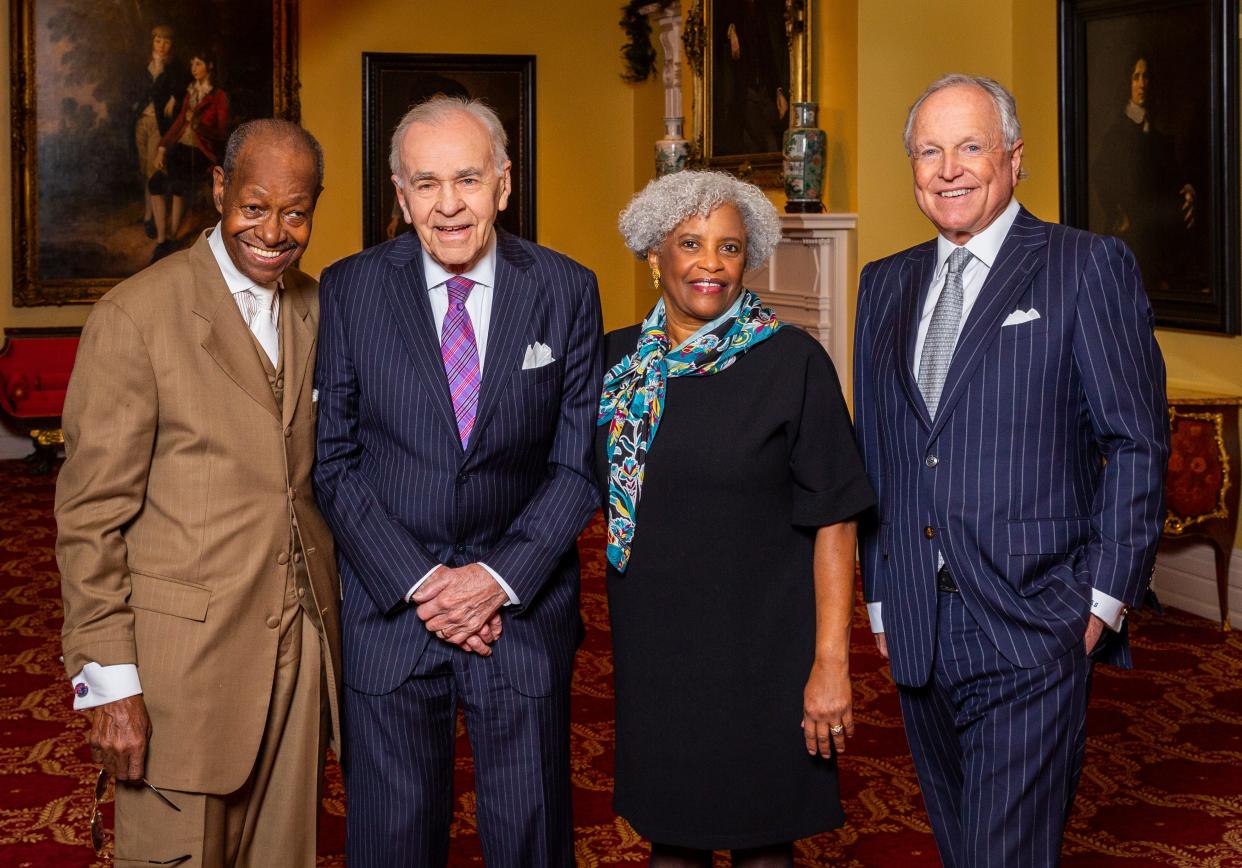
The Cincinnati USA Regional Chamber has announced the four individuals who will be honored as Great Living Cincinnatians.
Great Living Cincinnatians are recognized for their business and civic attainment on a local, state, national or international level; leadership; awareness of the needs of others, and distinctive accomplishments that have brought favorable attention to their community, institution or organization.
The 2023 honorees, who will join the previous 167 awardees named since 1967, are:
C. Smith
They say every picture tells a story. Well, for every picture he’s taken, C. Smith has a story. Smith takes photographs that feel alive. For more than 70 years, C. Smith has allowed people to see the world through his camera lens. He captures mood, expression and personality in a formula only he can create. His understanding of lighting and composition and knowing exactly when to pull the trigger have allowed him to gain a national reputation.
Smith’s calling card is capturing the intimacy of an instant, as signified by his tagline: “Your personal photographer.” Whether snapping a wedding or a miraculous moment in history, it was a sure bet the occasion would be told through the eyes of a master visual storyteller.
Raised in Cincinnati’s West End and Mount Auburn neighborhoods, Smith was “raised in the Boys Club. My mother was a working mother and when we got out of school, my sister went to the YWCA and my brother and I went to the Boys Club.”
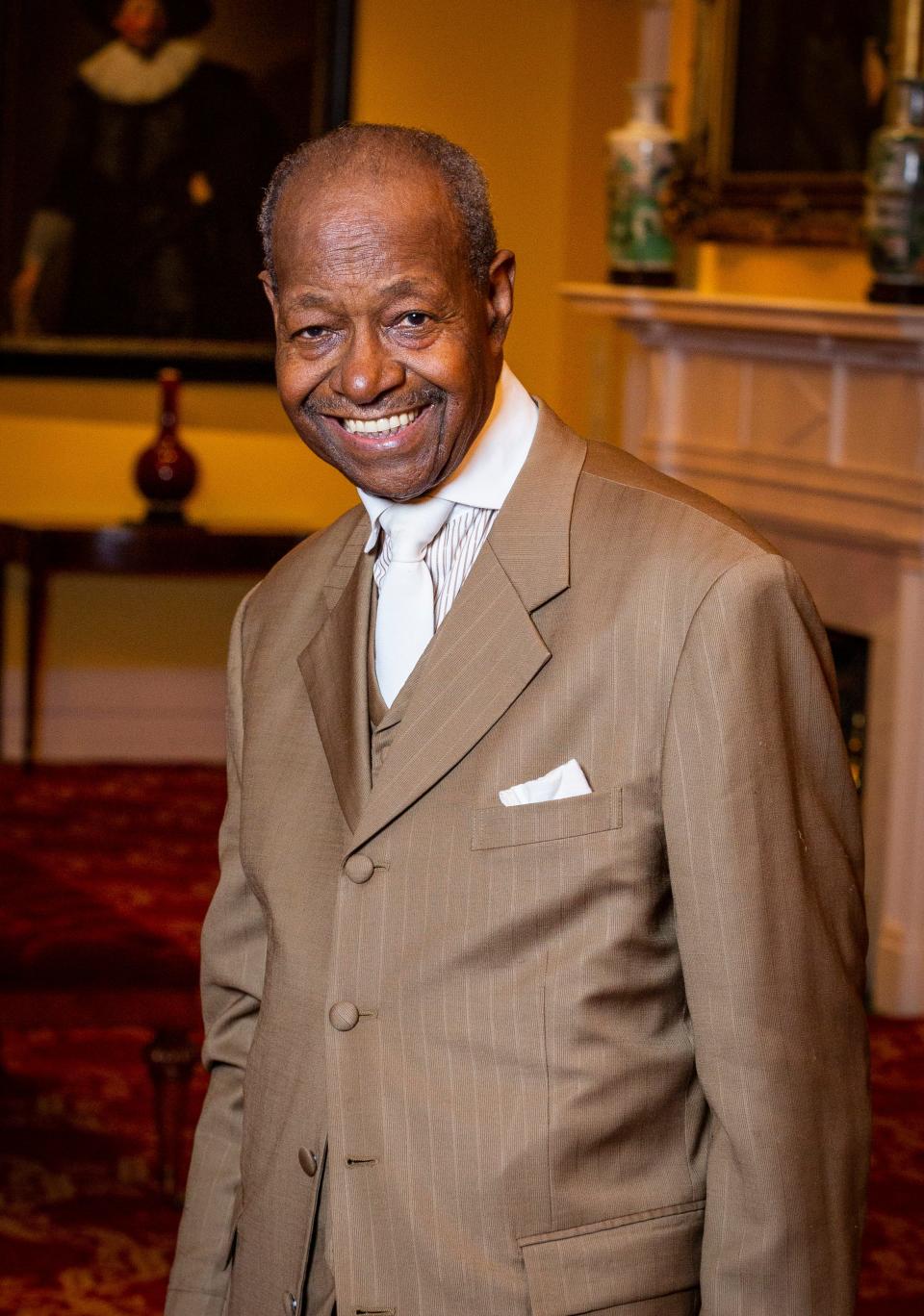
After attending Woodward High School for a year, he left to attend the Graphic Arts School of Photography and Printing, a trade school from which he graduated, with the initial intent of becoming a printer.
"We used to go to school for two weeks and work for two weeks," said Smith. One of only three Black students, Smith found himself getting into scrapes with other kids. Smith channeled some of his energy at the time into boxing. His principal took him under his wing and gave him a copy of the book ‘How to Win Friends and Influence People.’ This book helped him temper his approach and refine his conversations and relationships.
His path to photography started around the same time, in his early teens.
"I got involved in photography [through] Ed Coleman,” said Smith. “He was a freelance photographer who came to our house to take pictures for Christmas. I was really impressed with him and looking at his equipment. He asked me if I wanted a job working at his Super Speed Photographic studio."
The studio was located in the Sterling Hotel – directly across the hall from the storied Cotton Club, Cincinnati’s only integrated nightclub at the time. Smith was tasked with sweeping up the studio and doing grunt work, but he was captivated by the darkroom.
“I would look over [Coleman’s wife's] shoulder in the darkroom and watch the film being developed,” said Smith. “She had pictures of Duke Ellington and all the celebrities that came inside the Cotton Club.”
Smith didn’t know it then, but one day in the not-too-distant future, he would be the one taking photographs of famous people. His mother, Rosie Mae Smith, bought him his first camera, a Ricohflex. It was his access point for visually telling stories.
He went on to create his own publication, Ghetto Magazine, and his work was featured in several national Black publications. After many years working for General Electric, taking pictures on the side, Smith opened C. Smith Studio in 1981 to pursue photography full time.
Perhaps his greatest calling card is the photos Smith made of people from all walks of life. The list of individuals who have posed for photos, or allowed him access to take candid shots, includes politicians, clergy, sports figures, entertainers, activists, singers and musicians. Smith photographed and chronicled the 1960s riots of the civil rights movement. He photographed the peacefulness of the Dalai Lama and the quiet spirit of Martin Luther King, Jr. He captured the flair of Muhammad Ali and the fire of James Brown.
"I shot three presidents!" Smith said with a laugh.
Presidents Bill Clinton, George W. Bush, and Barack Obama were all among his subjects. His photography attests to his amazing ability to view scenes at a level deep enough for the viewer to not just see, but feel, what is being depicted.
Smith was also engaged to take business photographs, including capturing the opening ceremony of the National Underground Railroad Freedom Center in 2003. He chronicled the building of Paul Brown Stadium (now Paycor Stadium). He is the recipient of numerous awards and recognitions. The Greater Cincinnati Urban League recognized Smith as one of its Glorifying the Lions award winners in 2008. The African American Chamber of Greater Cincinnati/Northern Kentucky inducted him in its inaugural 2015 Black Business Hall of Fame class.
In 2017, his work was displayed in three separate exhibits, comprising over 200 images, throughout the main branch of the Cincinnati & Hamilton County Public Library
Life has afforded him an abundance of blessings, he says, and Smith uses his trademark expression, “better than good,” as a shorthand for the physical, mental and emotional manifestation of his luck – and hard work. So it is, too, with being named a Great Living Cincinnatian.
“I feel very humbled. And I feel very grateful that someone would look at me, and the body of work that I've accumulated over the years, and see its worth and want to recognize me for it," said Smith.
Three questions with C. Smith
What is your personal motto?
"'Better than good.' I say it maybe 20 times a day. I started saying that about 20 years ago. I got it from Les Brown, the motivational speaker. He was telling us that he visited a lady on her deathbed and he went into the hospital and said, 'How are you doing?' He bent down to hear what she had to say, and she said, 'Better than good.' I've been saying it ever since."
Who has been an inspiration to you?
“There’s so many. My mother, for one. My mother didn’t take no stuff. She raised three of us, me and my brother and sister. None of us has ever been to jail, never been in trouble and she raised us by herself. She was a hard worker. And certainly Ed Coleman, I called him 'Chief.’ He took me under his wing like a kid and taught me photography and business.”
What’s next for your career?
"I'm presently doing a 'legend' portfolio book. It will be the [pictorial] about me and the people I've photographed. [The book will contain hundreds of iconic never-before-seen pictures. A documentary is in the works by Hollywood actress and producer Pamella D'Pella, titled "Eye of C."]
Donald P. Klekamp
Donald Klekamp is quick to share the credit for his accomplishments. He points to many people who have inspired his personal and professional life over the years and is most adamant that his wife of 65 years, Marianne, is the reason he’s even on the list of Great Living Cincinnatians.
“I would not be receiving this award if it weren’t for her support,” he said during a call, his voice full of emotion. (Marianne has cancer.) “She’s as deserving of this award as I am.”
The couple met on a blind date, set up by his brother.
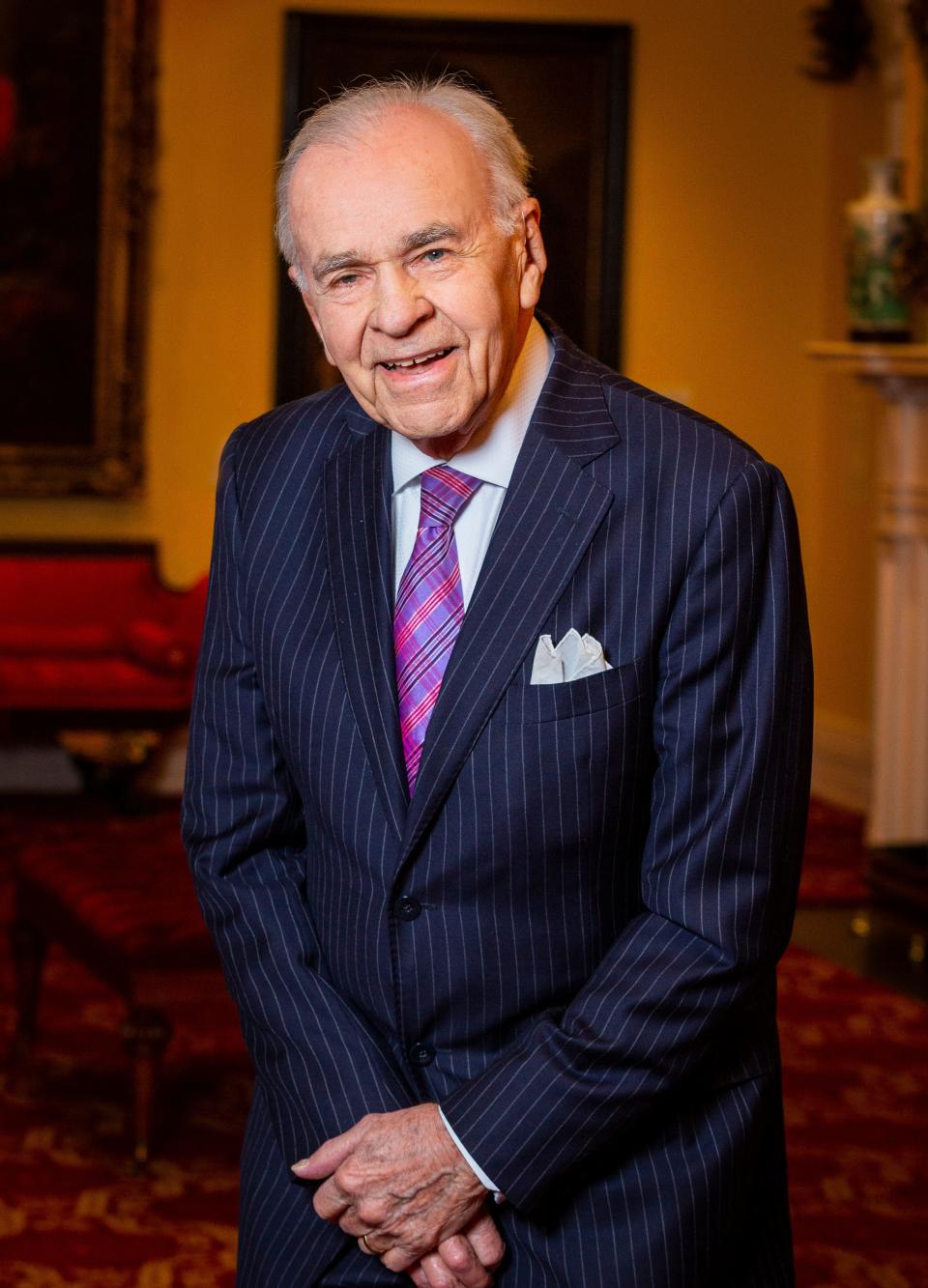
“I was kind of a nerdy guy,” he said. “You can imagine, a guy majoring in Latin and Greek. So I didn’t date much, so my brother Billy fixed me up with a blind date and I went to this dance and Marianne happened to be there. I was very attracted to her. I called her and that was the beginning of it.”
Klekamp grew up with his parents and three siblings in modest means in Carthage. He recalled his mother’s determination for her sons to be educated at St. Xavier High School, but she couldn’t afford the tuition. He and his brothers were able to attend, thanks to a deal his mother made with the high school’s then-president Father Lochbuler. Klekamp and his brothers worked at the school's switchboard and cleaned the gym and the physics lab.
“My mother instilled in me a work ethic and a moral ethic that has structured my life,” he said. “Idle was not in her vocabulary.”
He had “pretty good grades” and received financial assistance to attend Xavier University, before going on to the University of Cincinnati College of Law, graduating in 1957. He was offered a job in 1959 by Charles Keating and John Muething, filling a position left vacant by Keating’s brother, Bill, who left to accept an appointment as a municipal judge. Together, they became a three-person law firm, now known as Keating Muething and Klekamp, which has grown to a staff of approximately 240.
Shortly after Klekamp started at the firm, thanks to a contact made through his father-in-law, Dick Farmer of Cintas renown reached out. He was looking for a new lawyer and called Klekamp.
He said, ‘I’d like to talk to you sometime maybe about some law business,’” said Klekamp. So Don Klekamp drove to his office. That afternoon. "Farmer said to me, ‘Klekamp, I called every major law firm in the city and they all said, ‘Come down and see me sometime.’ You’re here. I’m impressed.’ We got the business and Cintas is now one of our largest corporate clients. That has to be the biggest break of my legal career.”
Klekamp was an original shareholder and director of Cintas and remained a director until age 70. He has served on several boards, including the University of Cincinnati Foundation, the dean’s board of visitors of the University of Cincinnati Law School, the National Coalition for the Protection of Children and Families, Life Issues Institute, and his alma mater, Xavier.
The Klekamps established the Donald P. Klekamp Professorship of Law at UC Law and provided funding for the Donald P. Klekamp Community Law Center, the new location of the Legal Aid Society. They also established scholarship funds at both Xavier University and St. Xavier High School. Among the many awards he has been given, Klekamp is particularly proud of receiving the Insignis Award from the latter in 2010.
“St. Xavier was very important in structuring my life and to receive the Insignis Award, the highest award they give to the alumni, that meant an awful lot to me,” said Klekamp.
The trustee emeritus awards from both Xavier University and the Legal Aid Society of Cincinnati were also very significant events in his life.
Faith is of the utmost importance to Klekamp. Until recently, he drove himself to Mass every morning, bringing home the Holy Eucharist for Marianne. He was the first president of the Ohio Right to Life Society, in 1973, and was co-chair with his wife of the Cincinnati Right to Life Society in 1971.
“I grew up a block and a half from the Catholic church,” said Klekamp. “My Catholic faith is very important to me. My mom instilled it in me and Marianne encouraged it because she’s a very devout Catholic.”
Father to five children and 16 grandchildren, Klekamp and Marianne raised their children in Indian Hill, where he served for eight years on city council and spent four years as mayor. Klekamp, who performed marriages as part of his mayoral duties, wed Neil Armstrong to his second wife, Carol Knight, in 1994. In fact, he and Marianne hosted the wedding at his home – “Marianne had shrimp and champagne afterward,” he said. His daughter Becky snapped a photo of the newlyweds.
Two weeks later, Armstrong himself stopped by the Klekamps, bearing a bottle of single-malt Scotch and a copy of the photo with the inscription: To Marianne and Don, thank you for being part of this wonderful day. Neil Armstrong.
When asked to reflect on what this award means to him, he repeats that he’s blessed.
“It caps off a very blessed career,” he said. “That means so much. It’s big, it’s very big, and it really caps off a very wonderful and blessed career.”
Three questions with Donald Klekamp
What other civic leaders do you admire?
“Father Michael Graham, who went into the presidency at Xavier University, simply transformed the university, and just did an outstanding job bringing it to where it is today, a major university in the United States. The next leaders are Barbara and Dr. Jack Willke. I worked with them early on with Right to Life matters. They dedicated their lives to protecting the unborn and God bless them. They have a special place in heaven for what they’ve done. The other I want to mention is Rev. Jerry Kirk, a Presbyterian minister, who formed organizations that fought pornography. I call them apostles of Christ as they have dedicated their lives to doing Christ’s work in a very significant way.”
What set you down the legal career path?
“I majored in Latin and Greek in college. I had eight years of Latin, six years of Greek. I got out and I didn’t know what to do with it. I couldn’t afford to go to medical school. My wife suggested I go to law school. I stuttered all my life and I said I can’t go to law school, lawyers have to be able to talk. She said, ‘You go to law school and you’ll overcome it.’ I went to law school and I did overcome it. It was this prompting that was one of the significant ways in which she helped structure my life.”
What’s your go-to piece of advice?
“I’d have to say, don’t get bogged down in insignificant matters. If things are insignificant, let them pass, go on with more significant matters. More importantly, however, always keep Jesus Christ as the center of your life.”
Janet Reid, Ph.D.
Janet Reid loves people. She's the founder of BRBS World, LLC, a global management consulting firm, a former Ph.D. chemist and brand manager at Procter & Gamble and a past university faculty member. Through it all, Reid has worked with and studied people.
“Many years ago, someone asked, ‘How did you go from chemistry in the innovation division at P&G to people-related management consulting? You must love people-chemistry’,” said Reid.
A 1975 graduate of Howard University with a bachelor's degree in chemistry, Reid skipped getting a master's degree, testing straight into the school’s doctorate program, from which she graduated with a doctorate in bioinorganic chemistry in 1979. Upon graduation, she had job offers from 10 global corporations, including P&G. Reid declined them all, becoming a chemistry instructor at Virginia Union University before being wooed to Cincinnati to work for P&G. Her time as the first Black female chemist at P&G, in an era when women (much less women of color) were still primarily relegated to secretarial work, opened the door for her people-work, where she became an early, vocal advocate of diversity and inclusion.
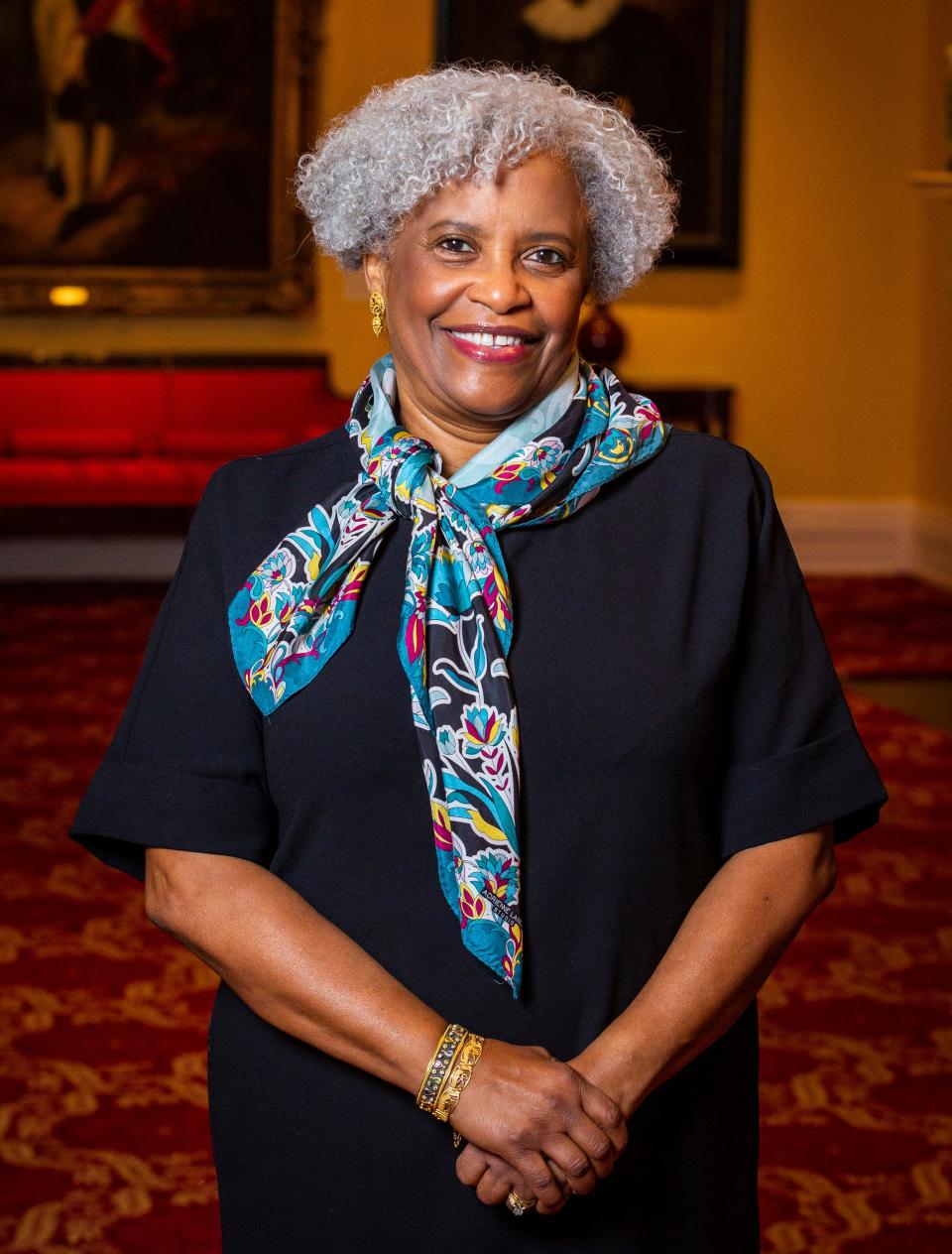
Seven years into her P&G tenure, at the behest of P&G CEO John Smale and under the tutelage of future P&G CEO John Pepper, Reid transferred from product development to marketing, surrounded by colleagues who were freshly minted Ivy League MBAs. That is to say, folks she didn’t have too much in common with, at first glance.
“I’d never taken a business course in all my life,” said Reid. “I learned a lot very quickly about how to run a business. My colleagues also benefitted from my tenure and learned company culture very quickly. It was a huge lesson in thinking diversity, education, cultural and racial diversity. At one time, I was the only African American on the whole floor. It taught me the power of diversity and inclusion, and the power of bringing together disparate pieces into a new whole.”
She helped found the predecessor to P&G’s African American Leadership Network in the early 1980s and held early conversations that led to the formation of P&G’s first LGBTQ+ employee resource group.
“A whole lot of things shaped my thinking about what companies can do to leverage the diversity that’s there by being inclusive,” said Reid. “When I finally did leave Procter to focus on diversity, equity, inclusion and belonging, I founded Global Lead with Samuel Lynch and Vincent Brown. There were maybe four or five firms in the United States doing work in this area. Now there are so many, I don’t even know who they all are. It was pioneering. It was a new, tough and often unpopular concept.”
Even before the corporate hurdles she overcame, there were a few personal ones, too, as a self-described “cripplingly shy” kid with a speech impediment. The daughter of educators, Reid was exposed to a host of international students who stayed with her family, opening her perspective from an early age to the value of diversity of thought and experience.
“When I look at it from a brain formation perspective, that experience shaped my thinking about people’s differences and similarities, and the amazing benefit that comes from building relationships with people who aren’t like you,” she said.
Prior to founding BRBS in 2010, Reid was the founder, managing partner and director of the international management consulting firm Global Novations LLC, which launched in 1987 as J.B. Reid and Associates. Reid and her companies consulted on diversity, equity, inclusion and belonging in over 40 countries and on every continent except Antarctica. She co-authored three books on the subject with business partner Vincent Brown. Goldman Sachs and other private equity firms invested in the company before it was eventually sold to Korn Ferry in 2010.
“It's very natural to be with people who are like you,” said Reid. “It takes effort and curiosity to seek meaningful relationships with people whose opinions, worldviews, lived experiences, values and/or cultures are very different. We have to listen to the other side with respectful empathy. That’s not very natural for most people. Developing that skill is beneficial to our city, region, country and world.”
Reid has served on numerous boards, including the Ohio State University, the Wexner Medical Center, the YWCA, Xavier University, Bon Secours Mercy Health, P&G’s External Diversity and Inclusion Advisory Council, the United Way, Cincinnati USA Regional Chamber and the United Way of Greater Cincinnati.
“Service is in my blood – it was in my parents’ blood,” she said. “The reason I appreciate serving on boards is the multiplying factor. You can do impactful things as an individual, but through wide-reaching organizations, there’s scale.”
To that end, after over 160 years, Reid was the first woman and first person of color to serve as board president of the Cincinnati chamber, in 2004.
“These are glass-ceiling cracking types of things that, when I look now, I feel that if a person like me is the ‘first,' they should not be the ‘last,' ” she said. “We need to make sure other people who can contribute to the organization are granted the same types of leadership positions.”
Her efforts have been recognized with several awards, including Laureate of the Greater Cincinnati Business Hall of Fame, Ernst & Young Entrepreneur of the Year, Cincinnati USA Regional Chamber WE Celebrate Pinnacle Award, Leadership Cincinnati Distinguished Alumni Award, Cincinnati Youth Collaborative Dream Maker, YWCA Career Woman of Achievement and Cincinnati Enquirer Woman of the Year.
“I don’t look at it as, ‘I did this or that,’ ” said Reid. “I look at it as, many prior generations who didn’t have my opportunities poured into me. I am the culmination of their struggles and sacrifice. When it is my turn to lead, whatever commendation I receive, I must do my best in honor of them. I am obliged to mentor and pour into the next generation and they must do so for the next. That’s how we all progress together."
Now, as a Great Living Cincinnatian, the same duty applies.
“I am humbled by this award, and to be in the company of so many amazing past and present honorees,” said Reid.
“While it is given to individuals, I see it as a testimony to our region. When my family and I moved to Cincinnati, the Ku Klux Klan still erected their cross on Fountain Square every year. So for a city to progress to where it is now means there are great Cincinnatians who are willing to make things better for everyone. This place is not perfect. But we have unique, wonderful assets that distinguish us. We should always work to become the place that values the diversity of its citizens and visitors and increases equity and inclusion. It will take the efforts of the Great Cincinnatians honored by this award, together with everyone who cares about this city.”
Three questions with Janet Reid
What is your go-to piece of advice?
“To unite, not divide. To have dialogue, not debate. To listen deeply and sincerely to people who are very different than yourself. To be willing to listen long enough to overcome your gut turning, or overcome objections you may have in your mind. Of course, when you’re dealing with people who are different, there might be initial discomfort. But hang in there long enough to seek the wisdom inherent in having the dialogue.”
Do you have a motto or creed by which you live your life?
“I’m a person of faith who respects all faiths and people who don’t believe in faith pathways. My motto reflects my faith and reminds me of my purpose. From the age of nine, I have known that in partnership with others, I am to help bring God’s people together, with a greater understanding of each other and with greater grace given to each other.”
Who has been an inspirational figure in your life?
“This question is very difficult for me because there are many inspirational figures in my life. My husband, children, son and daughter-in-laws, grandchildren, extended family by blood and love and the great people I have been blessed to work with over the decades inspire me daily. I’ve also been inspired by all the people who have encouraged me to do good things, care about others, and be eternally curious.”
Larry Sheakley
Larry Sheakley did not follow the conventional path to success. Now CEO of Sheakley Group, owner and investor in more than 20 different companies, including part owner of the Cincinnati Reds and FC Cincinnati, one thing has been consistent from the beginning: His entrepreneurial spirit.
“I didn’t do well in high school,” said Sheakley. “Looking back, I got straight A’s in certain subjects and I barely got through other subjects. It turns out I was a typical person with ADD. They didn’t diagnose it in those days.”
He grew up under a cloud of self-doubt, being told at every turn by teachers that he wasn’t living up to the best of his abilities. After spending two years in college in 1970, he decided to look beyond the halls of academia and dropped out, heading to work for his father’s company, Sheakley & Associates, where he was one of only three employees. In 1976, after helping to grow the business, he put the wheels in motion to buy the company outright from his father.
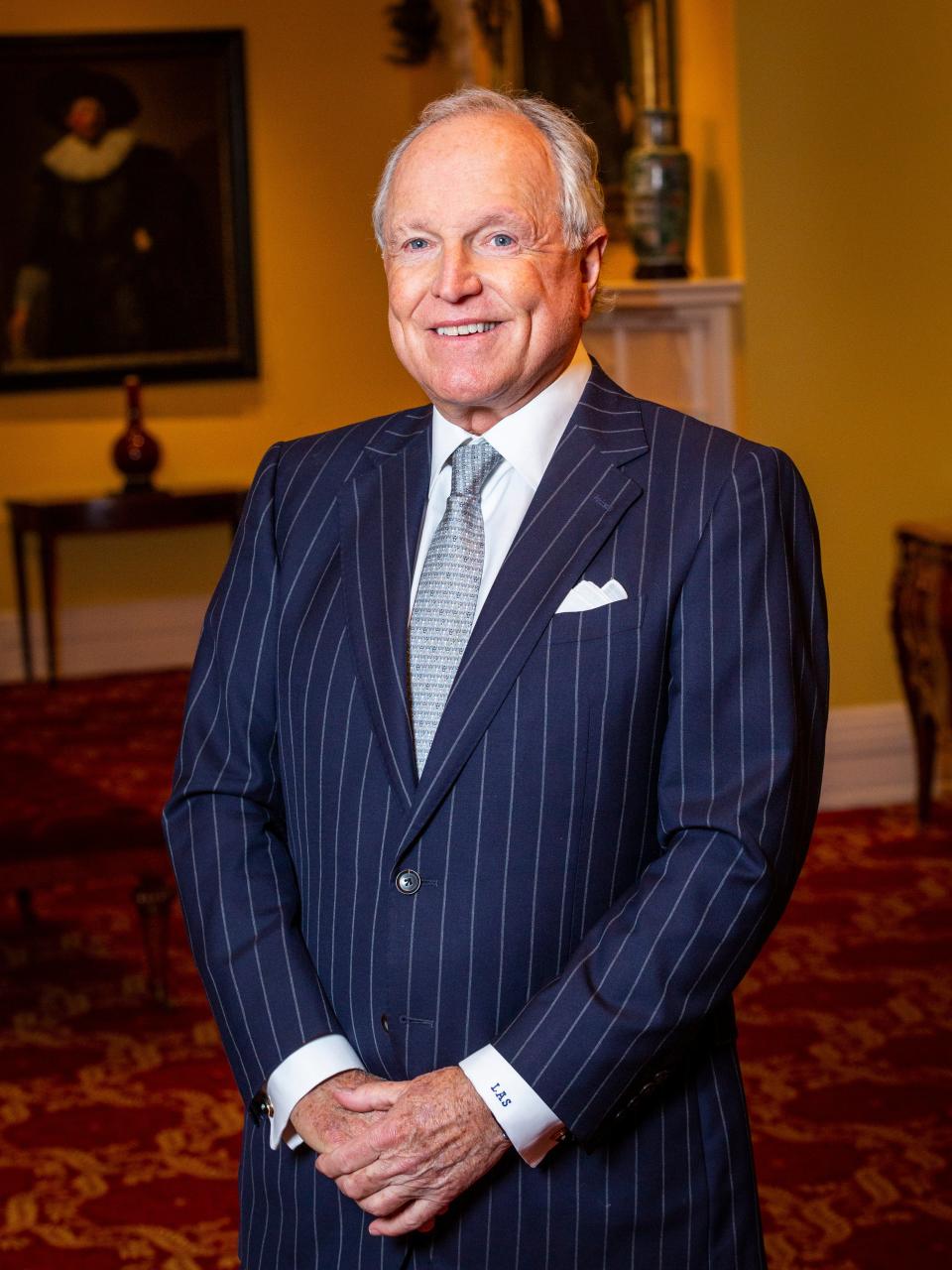
“I was 26 and kind of thought I knew everything and obviously I didn’t,” he said. “But one thing led to another and I kept growing it. In 1980 I started another separate business managing a medical self-insured program. That was the first time I’d ever started a company on my own.”
Soon after, Sheakley purchased a small company in Phoenix. The following year he bought another in San Francisco and a year later another in Los Angeles. The Sheakley Group of Cos. was born.
“It was kind of off to the races,” he said. “Since then, I’ve purchased several different businesses, some in the same industry, and rolled them up into what we were doing, and sometimes others. I started a number of businesses in related industries as offshoots. It’s 52 years of this and here I am.”
The way Sheakley sees it, he got lucky.
“I love achieving. I love building a business, hiring people, talking to people,” he said. “I loved what I was doing, so I put full focus into it. I got lucky because business is something I really did like. I often think back, ‘What if I didn’t like business, what would my life be like?’ I don’t know.”
Sheakley’s love of business was also inspired by another prominent and successful local businessman, Carl Lindner, Jr.
“He was a business idol of mine growing up because he, too, had a very unconventional path to great success,” said Sheakley. "This is a guy that went to high school then started out in the ice cream business and the next thing you know he’s in the insurance business, banking business, banana business, you name it.”
Under Sheakley’s leadership, Sheakley Group was transformed into a powerhouse human resources company, with offices and employees across the nation. The company has been included on the Deloitte Cincinnati USA 100 list for the last 15 years.
Lindner inspired him in other ways, too. The former’s philanthropic endeavors served as a model for the way Sheakley has given back to the community.
Sheakley and his wife Rhonda have donated millions to the Cincinnati Ballet and Cincinnati Art Museum and have served as major supporters of various other arts organizations, as well as the University of Cincinnati. UC’s Sheakley Quarterback Scholarship was created in 2014, providing the starting quarterback with full tuition in perpetuity. The Sheakleys provided the funds for the Sheakley Lawn at Varsity Village, named in honor of his father, and a suite in Nippert Stadium, named in honor of his mother, from whom he inherited his love for UC athletics. He also provided the lead gift for the Sheakley Athletic Center, the indoor training facility for sports teams at UC.
The Sheakley mission in our community is seen in their commitment to both Lighthouse Youth Services and the Boys and Girls Club. The Sheakleys gave a lead gift to build the Sheakley Boys and Girls Club in Price Hill along with the Sheakley Lighthouse Center for Youth.
“I was asked to go to a Boys and Girls Club one day down in Over-the-Rhine,” said Sheakley. “My vision was it was somewhere kids went to have a good time. What I found out was, a lot of it has to do with these kids getting off the streets because they’re scared and they don’t get a hot meal anywhere else and I couldn’t believe that. I literally started thinking about my life, that I never lived a day in fear and I never lived a day without a hot meal. It just hit me in the face.”
For their charitable efforts, both Sheakley and his wife have received numerous awards. In 2013 they were honored as Cincinnati Philanthropists of the Year. In 2016, they received the distinguished humanitarian award “Tree of Life” from Jewish National Fund for their commitment to the Cincinnati community. In 2018, Sheakley was inducted into the Cincinnati Business Hall of Fame and received the Carl H. Lindner Award for Entrepreneurship and Civic Spirit.
“His oldest son, Carl, called me and said, ‘Larry, I just want you to know you’ve been awarded the Carl H. Lindner Award,' ” said Sheakley. “I literally started crying on the phone. It was unbelievable because it came out of nowhere. It’s huge. To me, that was just an unbelievable moment in my life.”
When he was told he’d been honored as a Great Living Cincinnatian, Sheakley was just as overwhelmed with joy and gratitude.
“I was stunned. It was about the culmination of a lifetime of commitment, dedication and love for the city that I grew up in and being recognized by my peers, ‘Wow, they actually think I’m a Great Living Cincinnatian.' ”
Three questions with Larry Sheakley
Who has been an inspirational figure in your life?
My parents. My father for the tough love and showing me his strength through God. My mother for being there for me every day and never showing me anything but unconditional love.
What does the spirit of philanthropy mean to you?
“A lot of times when you’re doing things, you’re doing them because that’s what you want to do from your heart, not expecting anything to come back the other way, right? My mother always used to tell me, ‘A gift truly isn’t a gift if you expect something in return.’”
Do you have a personal motto or creed you operate by?
“It’s how you treat people. Giving back is definitely a big thing with both my wife and I, trying to help people that are less fortunate and helping our city, Cincinnati, become an even better place for the generations to come.”
If you go
What: Cincinnati USA Regional Chamber annual dinner, including honors for the latest Great Living Cincinnatians
When: 5-8:30 p.m., Thursday, March 2.
Where: Duke Energy Convention Center, 525 Elm St., Cincinnati
Registration: https://www.eventbrite.com/e/annual-dinner-2023-legacy-promise-a-celebration-of-leadership-tickets-469645671847
This article originally appeared on Cincinnati Enquirer: How the new class of Great Living Cincinnatians made a lasting impact

